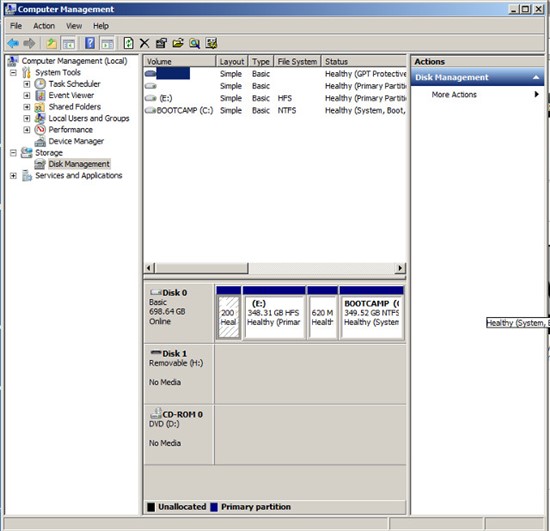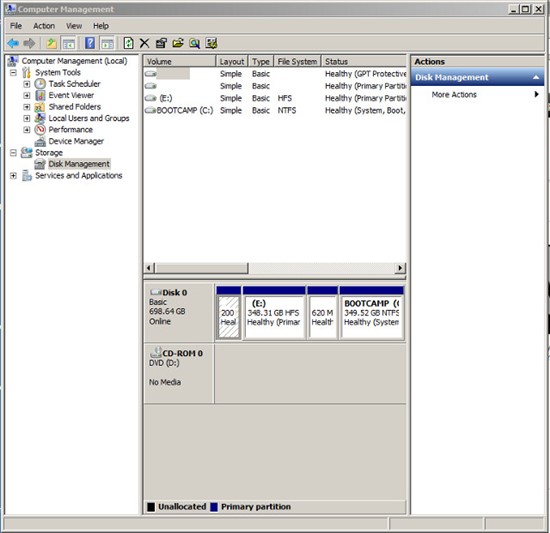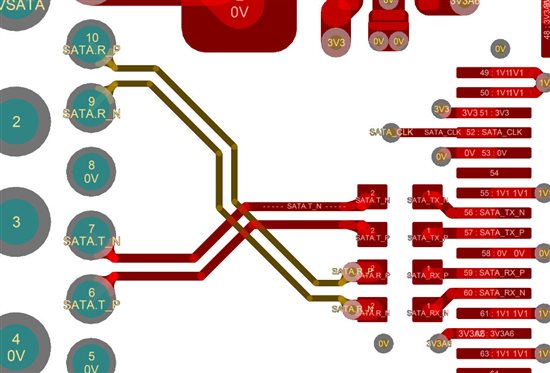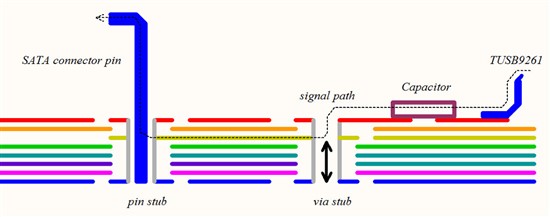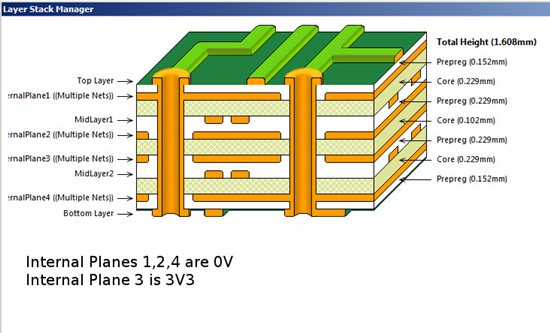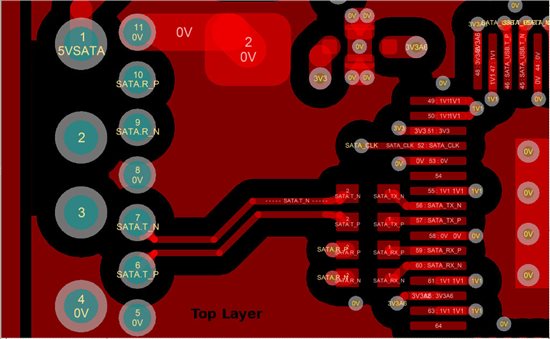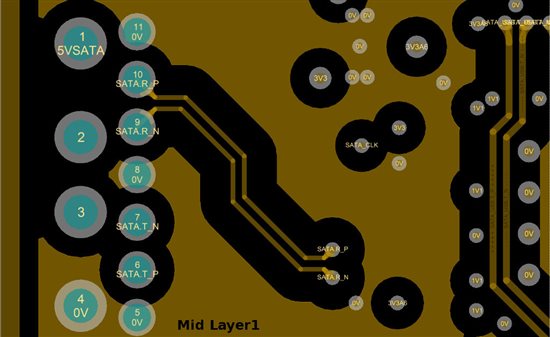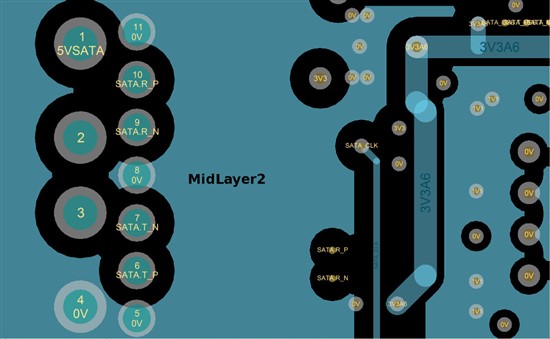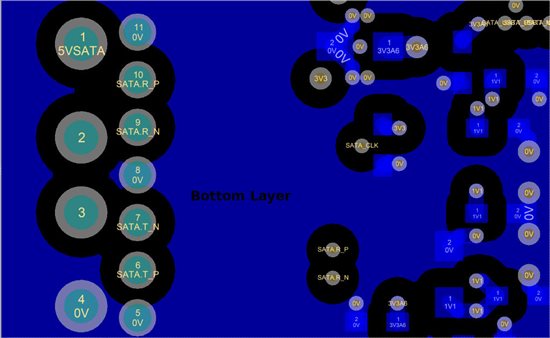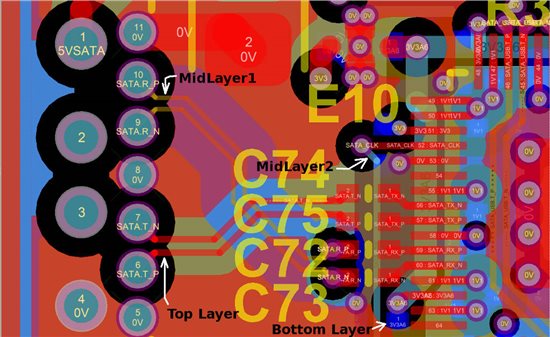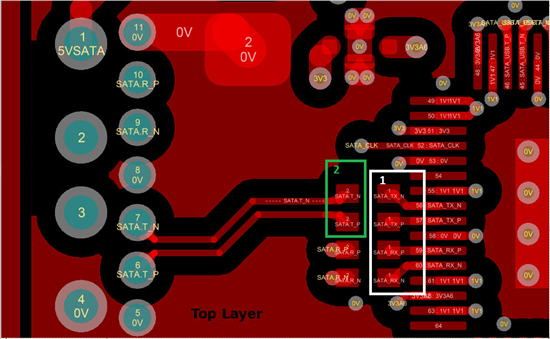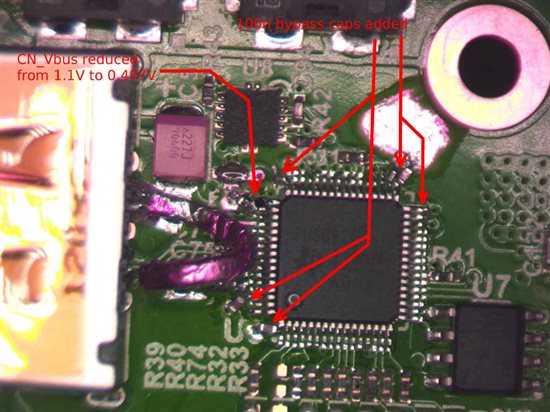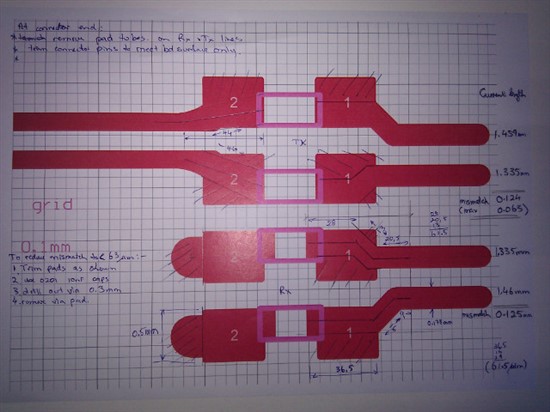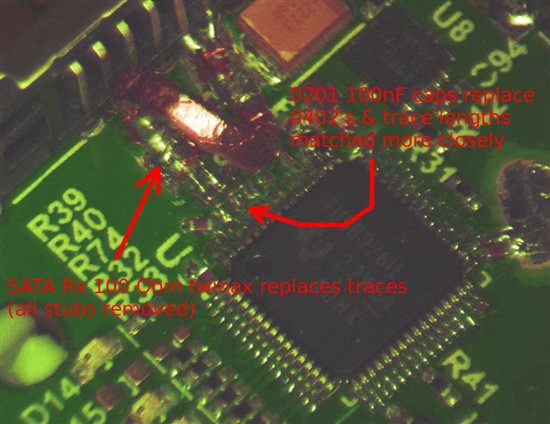A TUSB9261 is connected through a USB 3 hub controller to a PC. At the SATA interface is an eSATAp drive. The circuit used is essentially that of the Evaluation Board, except for the clock which is fed directly, and the reset is provided by a MCP130T-315 reset controller. (see below)
In this case only the Rx polarity is swapped, so TUSB926x_FW_v1.00_SATA_POLARITY_SWAP_RX.bin was uploaded to the Flash using the Flash Burner. HID was enabled.
Without an eSATAp drive connected, both Windows 7 and Linux PC's can see the TUSB9261. In the case of the Win PC, "Computer Management" showed it as Disk 1, Removable (H:) No Media
However, when media IS inserted, neither the Win or Linux PC's can see the TUSB9261 any more. In the case of the Win 7 PC:
Regardless of whether the HDD is connected or not, the HDD_ACT led is ON, as is the SS_CONNECT led. While theSW_HB lead is pulsing at ~ 1Hz
The remaining leds are OFF, so the Power state is U0: Active
The milestone for this part of the project in two days away, so I'm getting a little frantic, although it is so very close.
Can you (anyone) please shed some light on this strange behaviour?


